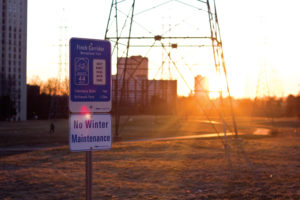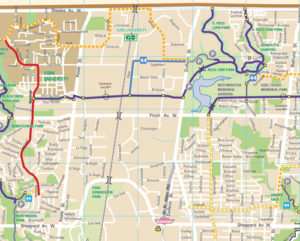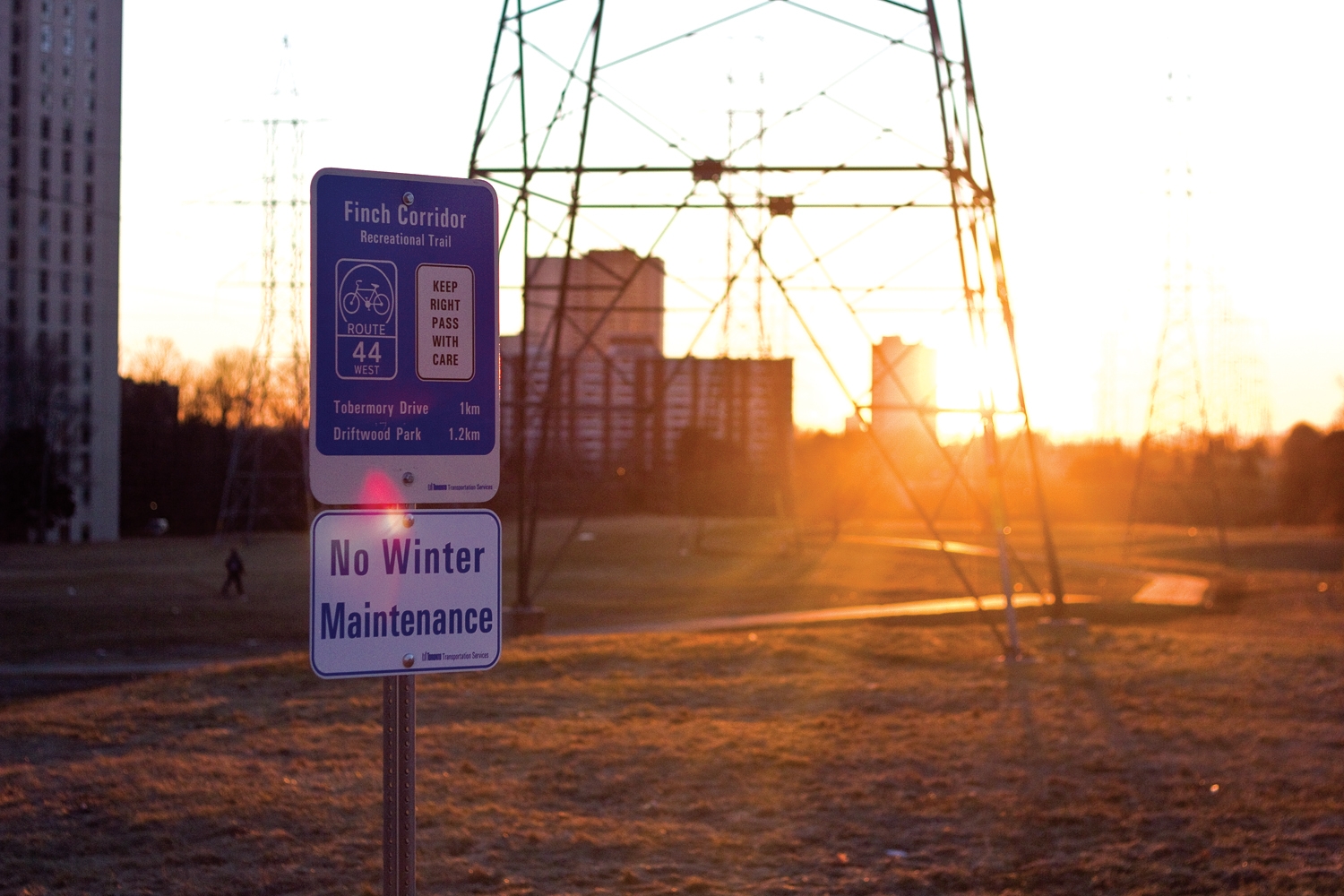Route 44 sees smooth roads with bumps along the way
Managing Editor
@alexwagstaff

When it comes to biking to Keele campus, just about anything would be better than the road. For those unwilling to traverse the moat of motor traffic surrounding York, alternatives are scarce.
Bike lanes are non-existent on Keele and Finch, the two arteries that connect the university to North York to the east and Old Toronto to the south. The only lane near the campus runs down Sentinel as far south as Downsview Park, where it ends abruptly.
However, the introduction of Route 44 could change all that. The new paved path is York’s first real chance at linking up with the rest of Toronto’s cycling network. Along with the York University Busway that serves the 196, Route 44 is nestled into the Finch Hydro Corridor: a long notch of green space in the top edge of Toronto that carves out a home for the power lines feeding the city.
But in its current form, it is only a shadow of opportunity. With key connections still unfinished, Route 44 can only be traversed in segments.
Work originally began on the project in October 2010 as a way to use leftover provincial and federal infrastructure money that would otherwise have been rescinded at the end of the year. Due to its fixed budget and hasty approval, the path was designed to get the job done.
“Because we had such a small window to build, we had to take the path of least resistance,” says Daniel Egan, the city’s manager of pedestrian and cycling infrastructure. Perhaps this would account for the lack of overhead lights along the route and the use of traffic lights instead of tunnels at road intersections.
The biggest compromise came when dealing with the reservoir at Dufferin and Finch, which lies directly where the trail would run. The path splits to wrap around and meets at a point only 400 metres away, on the other side. Without a bridge, there are only two ways to get there.
Sticking to the path involves a detour through G. Ross Lord Park that adds a kilometre of slow-going twists and turns to an otherwise efficient route for commuters.
Instead of taking the diversion through the park, the cyclist who is tempted by the proximity of the connection is likely to go around the reservoir to the south. Here, they will be faced with the decision to either ride on a narrow sidewalk or try to turn left at Finch.
Here, the sidewalk is the logical route: there’s no need to deal with cars.

And luckily for the cash-strapped scofflaw cyclist, tickets for riding on the sidewalk are only $3.75 apiece along the corridor instead of the $90 it costs downtown. At a price barely more than that of a subway token, sidewalk fines in North York come across more like a toll than a punishment for wrongdoing.
But despite its flaws, the problem with Route 44 isn’t the plan but rather the execution. The original completion date was set for March 2011. Then it was pushed to July. And then again to August.
“There were some contractual delays,” says Samuel Jebakumar, the city’s project manager. “They were partly due to some construction-related issues.”
Fast forward a year and a half later. The vast majority of the path has been built, but there is still one obstacle that remains: the Toronto-Barrie train line. The tracks are owned and operated for GO Transit by Metrolinx. While physically trivial to get over, building over the tracks requires approval from Metrolinx, which has been slow.
“That particular section is not completed because the crossing agreement got considerably delayed,” says Jebakumar. “It’s still not signed off by the Metrolinx officials.”
Though the paperwork was sent in October, city staff were still waiting for approval as of February 1, when Metrolinx said that they were still “processing the final paperwork” and that they “expect [it] to be approved shortly.”
The future for Route 44 remains open but positive. At a February 6 public meeting, cycling infrastructure answered questions about newly announced trail connections, including additions to the westmost and eastmost ends of the Finch Hydro Corridor trail. Though there was no official word on the train crossing, Egan seems optimistic that the connection would be built soon.
“That’ll get solved in the spring,” he says. Even the problem of getting around the reservoir could see new solutions in the future. “That’s still the long term plan, to build that piece.”



